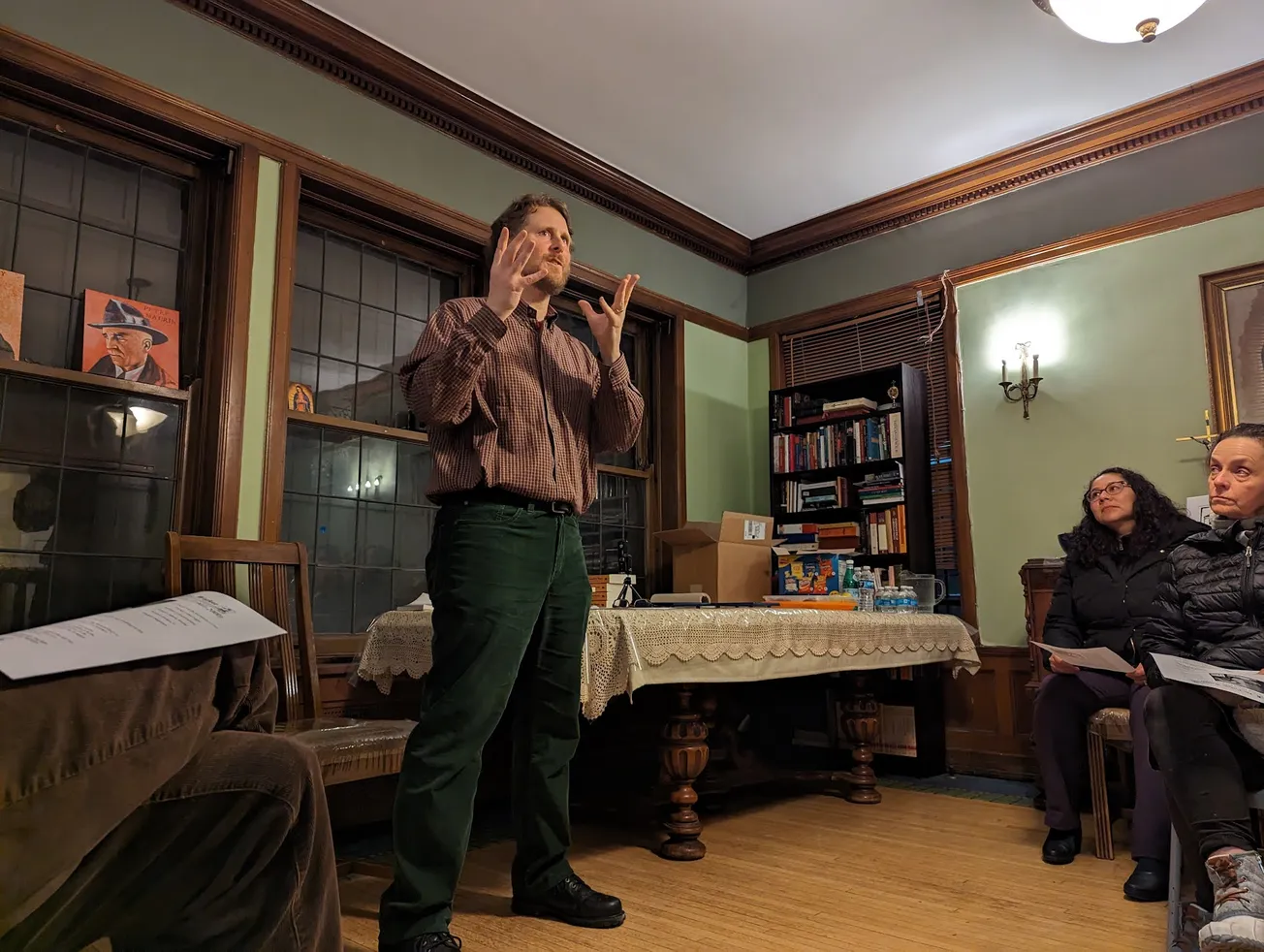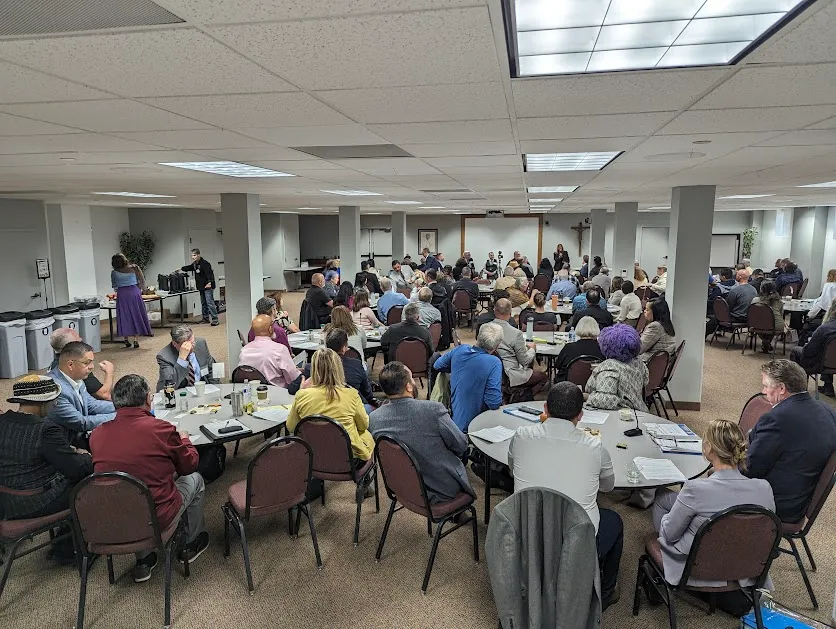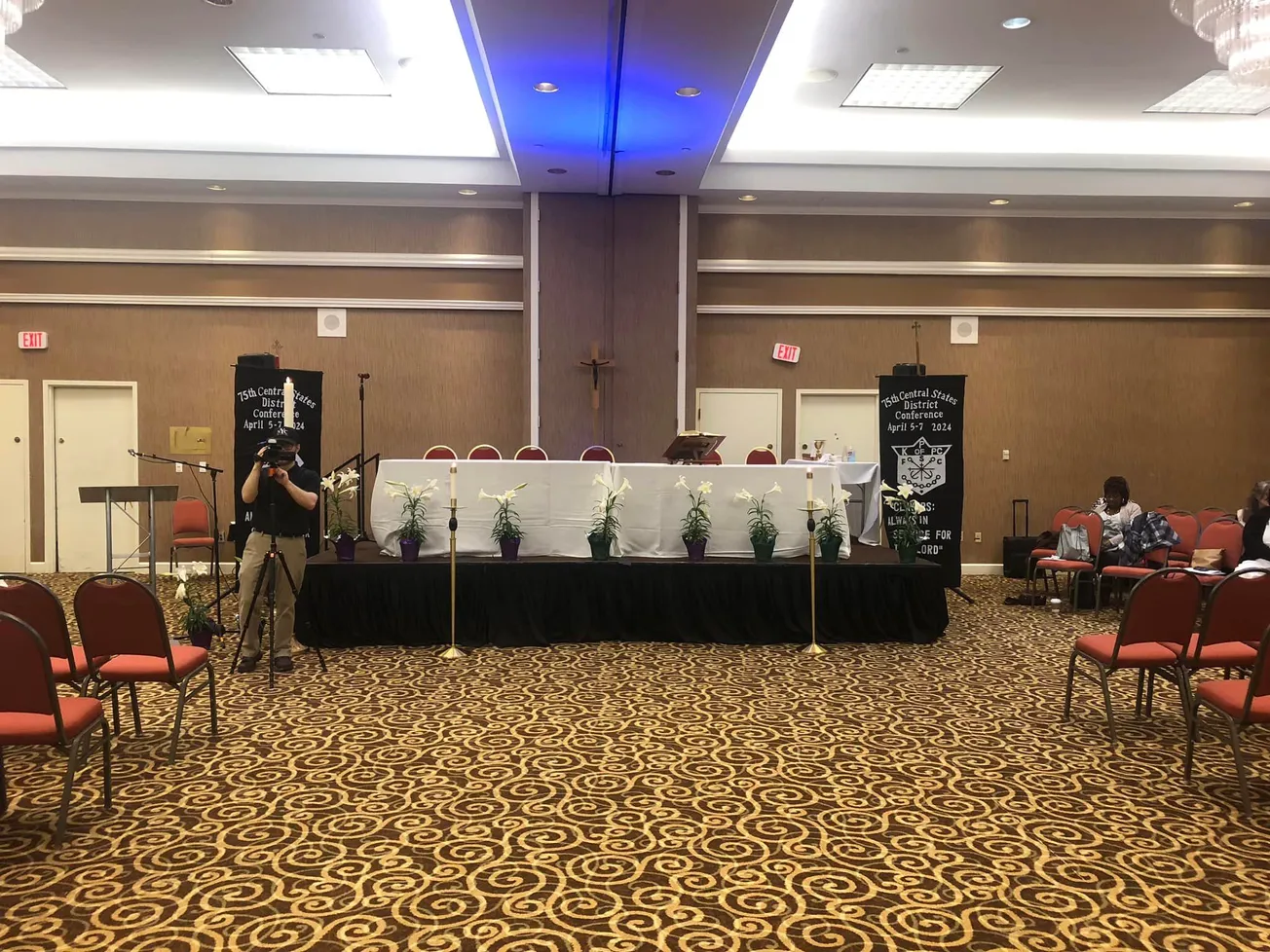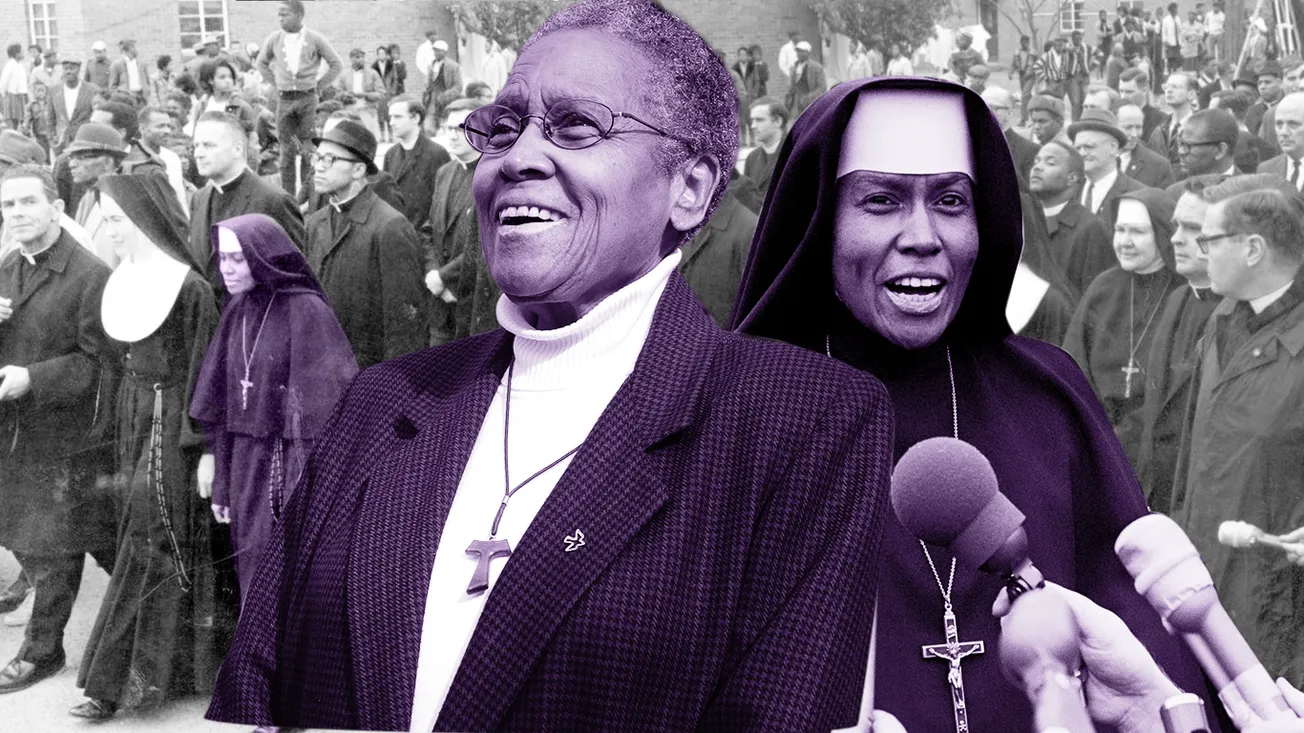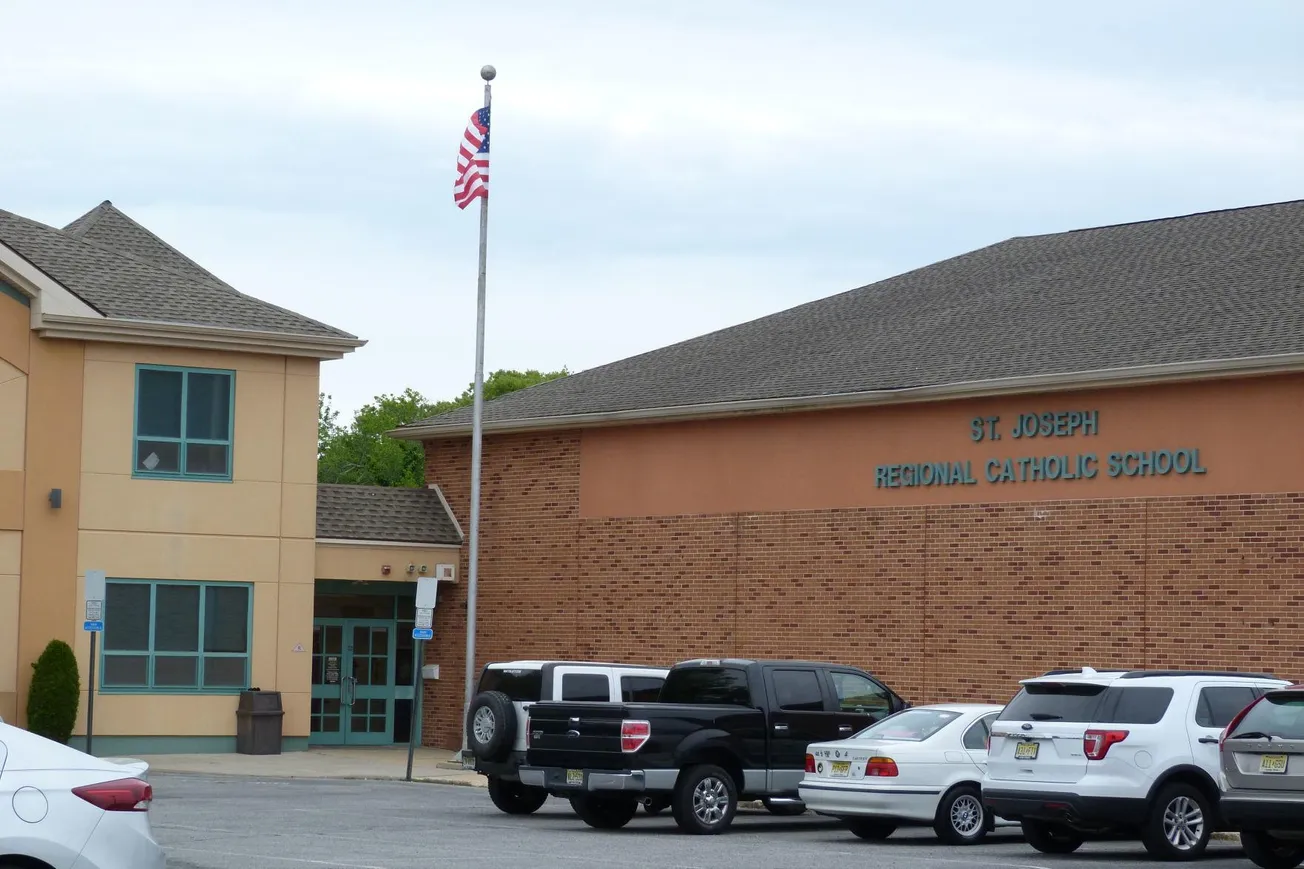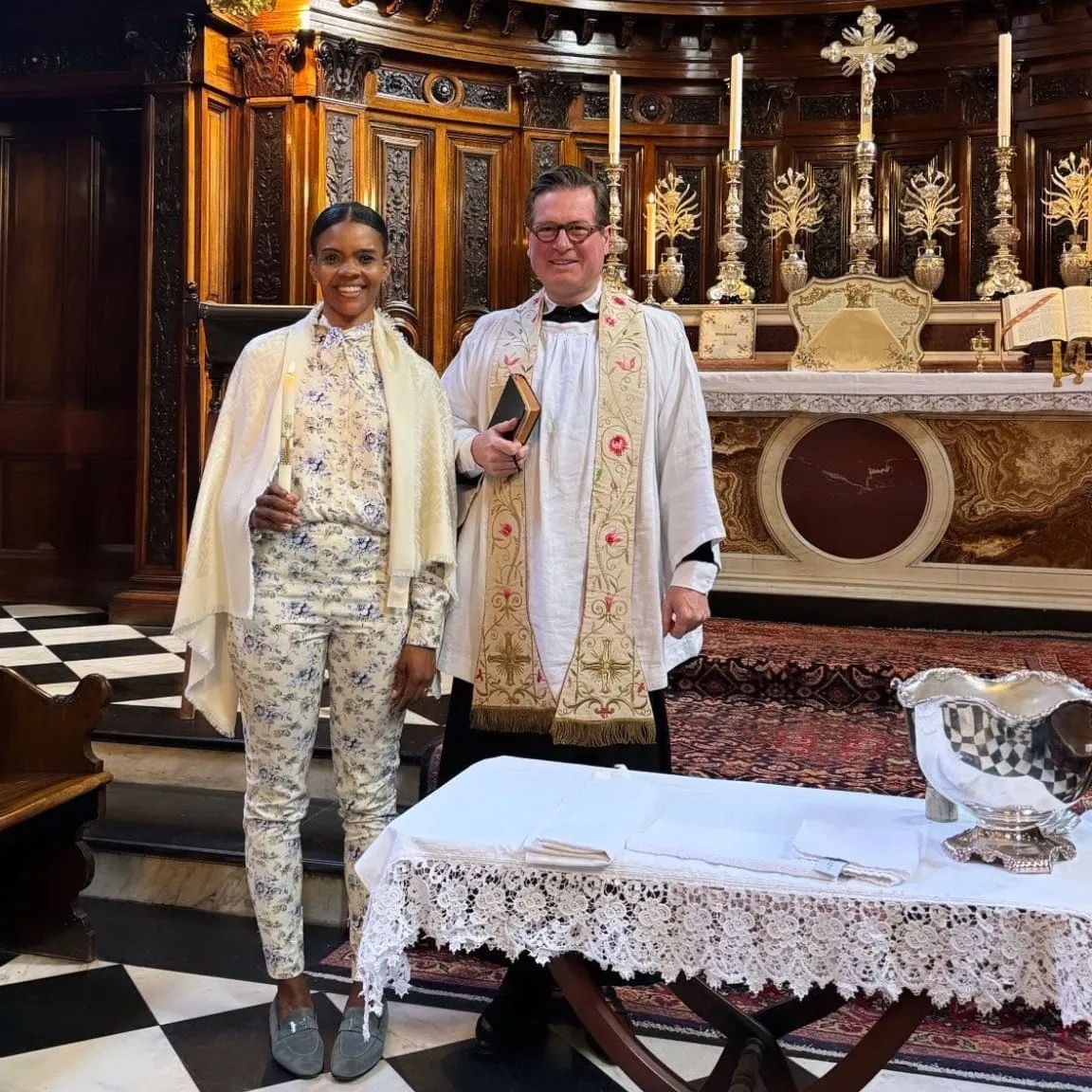CHICAGO — Dr. Arthur G. Falls Sr. is something of a mysterious figure. A Black Catholic crusader for civil rights long before it was in vogue, he is only scarcely mentioned in the historical record, though in some circles he is well known—even revered.
One of those circles is the Catholic Worker Movement, where he is noted as the founder of the movement's first house in Chicago, where he lived for most all of his life. There, on Jan. 25 at Canterbury House in Uptown, a Worker par excellence presented on Falls’ life to a crowd eager to learn of the forgotten Black physician.
Milwaukee’s Dr. Lincoln Rice, who this year celebrates the 10th anniversary of his book “Healing the Racial Divide: A Catholic Racial Justice Framework Inspired by Dr. Arthur Falls,” spoke as part of the regular roundtable discussion series hosted in the rectory of St. Thomas of Canterbury Catholic Church.
Working from his book—itself based on Falls’ unpublished memoir, recovered from a beloved niece after his death—Rice covered Falls’ fascinating journey of life, beginning in 1901 with his Louisiana Creole family roots and the harsh underbelly of early 20th-century Catholic race relations in Chicago. Roundly resilient, Falls found success in the medical profession as a Black surgeon in the 1920s.
“He didn't really want to go into surgery but he thought surgery was his best option because it allowed him sometimes to be involved in surgeries where he never met the patient who might otherwise say, ‘I don't want you doing surgery on me,’” Rice said.
“So he felt it was his best option to actually be a doctor and be able to make more of a living.”
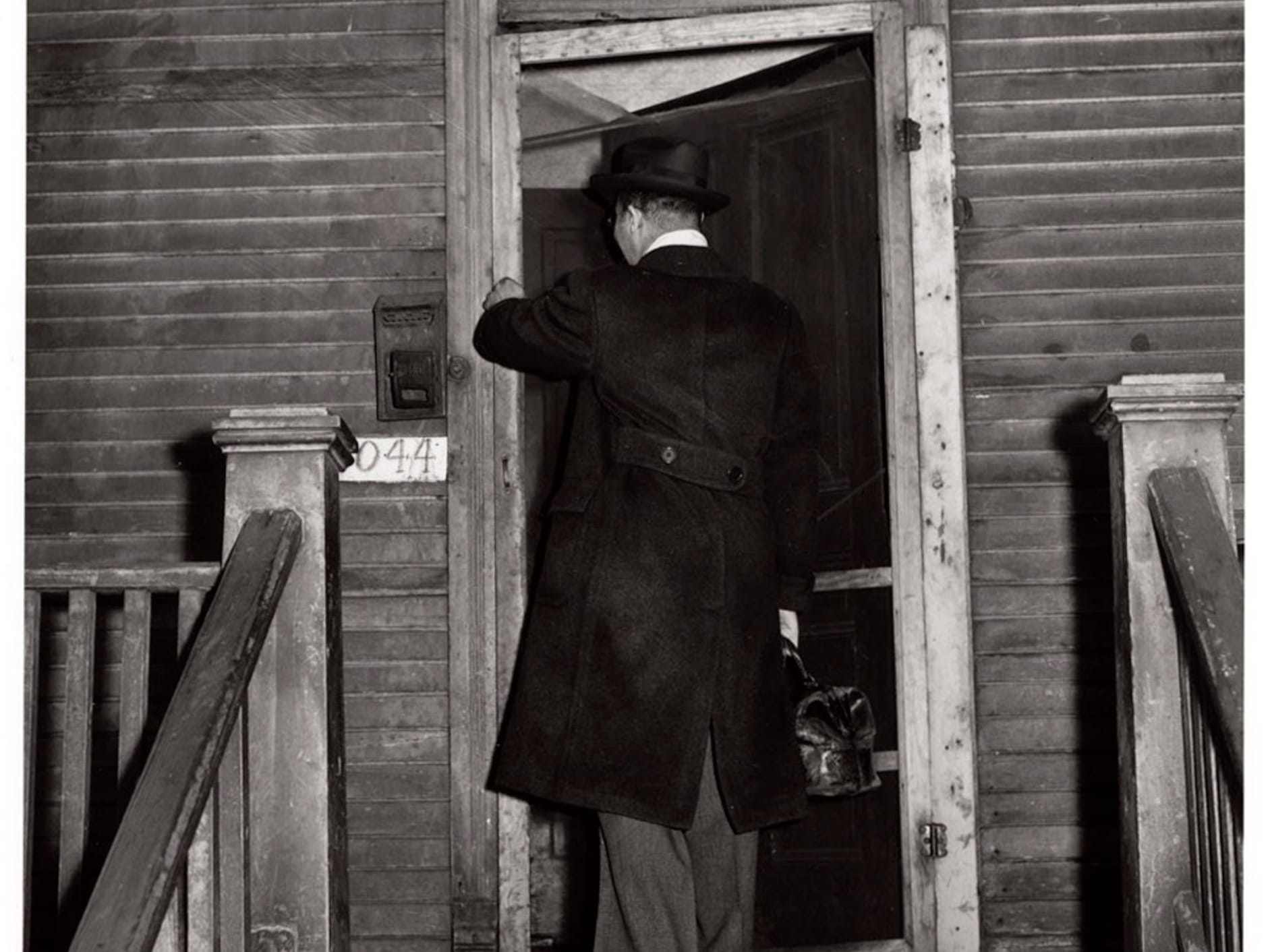
It was not surgery that brought Falls into contact with Catholic Worker co-foundress Dorothy Day, but their collision did bring about one of the more colorful episodes in Falls’ activistic career. He first corresponded with Day following the advent of the Catholic Worker newspaper in 1933, suggesting that they change the two White figures on the masthead to reflect an interracial vision.
Day agreed, acted, and quickly earned Falls’ respect. He was likely the first major African-American figure in the Catholic Worker Movement, and by 1936 he had started its first house in Chicago. Like many of his projects, it was not easily categorized or understood.
“It wasn't a House of Hospitality,” Rice told the roundtable attendees, noting the contrast with the typical Catholic Worker establishments at the time. “No one lived there. They didn't take in women and children, or single men, or single women. They had different committees.”
Rice said the unorthodox structure of the venture came from Falls’ involvement in the Chicago Urban League and the Federated Colored Catholics. The latter was a national organization founded in 1925 by Dr. Thomas Wyatt Turner—another early Black Catholic social leader who, like Falls, spoke out strongly against segregation in secular and Catholic contexts alike.
Falls sought to educate Catholics and anyone who would listen about the need for what Catholic Worker co-founder Peter Maurin called “clarification of thought,” one of the three main pillars of the movement.
“Falls was particularly taken with that aspect, whereas the second notion is the House of Hospitality, and the third point in Peter's program is the farming communes,” Rice said. “But Falls really wanted to focus on the first one.”
Falls is less known for this aspect of his work, as it was in some ways experimental and had hardly the same effect as his public work of clarification. He did not educate only in the Catholic Worker “school” he founded at 1841 West Taylor Street on the Near West Side—ironically enough, in what is now known as Chicago’s main medical district.
On one occasion, Day visited Falls and was in need of surgery, wishing for it to take place at a local Catholic institution in a Black neighborhood, Little Company of Mary Hospital. Perhaps she didn’t know it had advertised itself as serving “mothers of Catholic families of the White race,” reflecting the existing prejudices of Catholics in both the Deep South and the enlightened North. She told the staff she wanted Falls to perform the operation.
“The father superior and the nuns were like, ‘This guy cannot perform surgery. We have a reputation,’” Rice noted, adding that they eventually relented after Day would not. Nevertheless, they listed Falls as the assisting surgeon on the official paperwork.
“I guess this hospital didn't want to be known as the hospital where Dorothy Day died.”
Falls would go on to join other local doctors in suing nearly every hospital in the city, including those operated by the Catholic Church, to allow Black patients and doctors to use the facility of their choice. By 1964, they had triumphed. Falls won a similar lawsuit when the government attempted to seize his family’s land after they desegregated the Chicago suburb of Western Springs.
One participant in the roundtable this month noted that Falls seemed to be working through various obstacles related to racism throughout his life, beginning in his childhood, from education to medicine to religion to housing. It immediately brought to mind the idea that he was operated not just on the human body but on White society in Chicagoland.
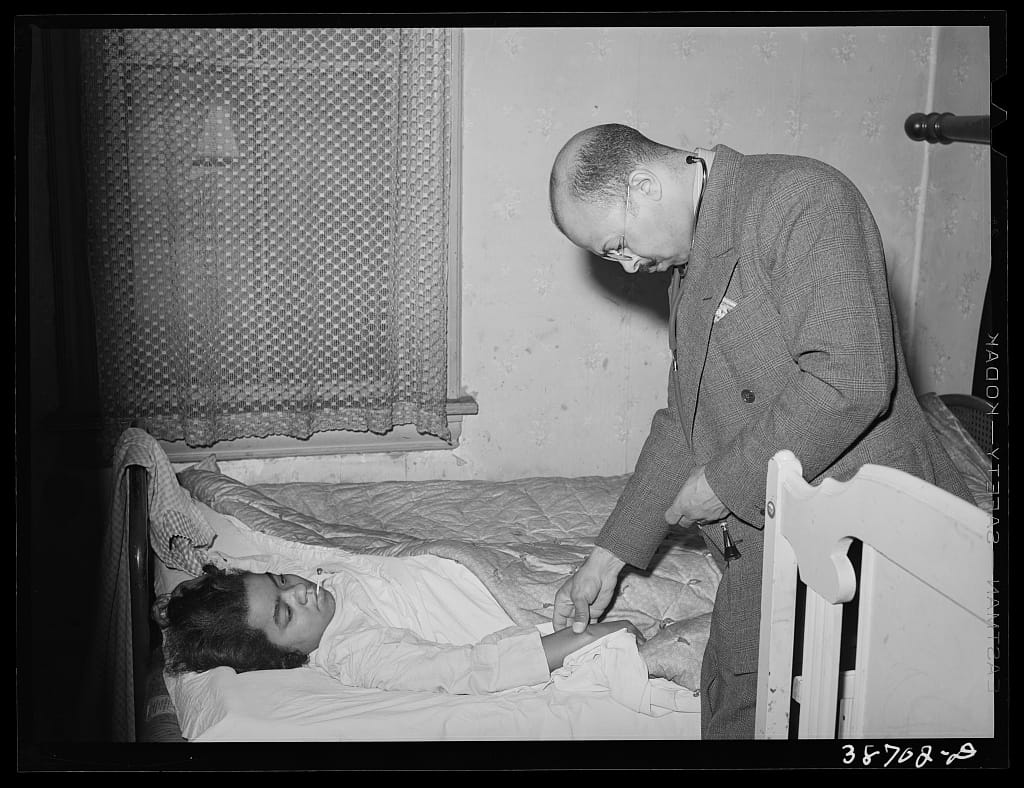
Falls was hardly rewarded or recognized for his efforts. He was opposed by many of his fellow parishioners, and nuns, parish priests, and even bishops—Cardinal Samuel Stritch of Chicago was a particularly sour acquaintance—were likewise unreceptive to his forward-thinking vision. His neighbors in Western Springs once threw a brick through his window and nearly injured a family houseguest.
Falls died in the year 2000 at the age of 99. His funeral was held in Western Springs at St. John of the Cross Catholic Church—the integrated parish of which he and his wife Lillian were founding members in 1960. According to Rice’s sources and others, the Requiem Mass was sparsely attended, portending the near quarter-century of relative silence thereafter.
“He's been largely ignored,” Rice said, being the major outlier in coverage of Falls’ influence. “Part of it could be that he really made his mark in the 30s, 40s, 50s, and early 60s.”
Part of it could also be that he was not one to bridle his tongue, unhesitant to shout into the halls of power that justice was underserved and overdue. It was the Catholic Worker way. It was the African-American way.
Still, the comparisons to be made are stark: Dorothy Day, the great mother of Catholic alt-left thought, was a celebrity in life and is now on the path to canonization. Falls was obscure even before his body reached the coffin.
“I still have hope that Arthur Falls will gain wider traction,” Rice said, adding that the great physician is “deserving” of a sainthood cause.
“From everything I've read about him and his life, all the people that knew him, and the interviews he gave—to me, everything points to him being a saint and I see nothing to detract from that viewpoint.”
Like many unsung figures of Black history, it may be the case with Falls that his greatest admirers, those who possessed the power and presence to ensure the world never forgot his name, are long dead and gone. Falls clearly never sought recognition, and in that sense he got what he was looking for.
Still, one wonders whether his justice-seeking, moreso for a future generation than for himself, includes within its own orb the ideal that the worker deserves his due—to borrow a Biblical turn of phrase.
It seems obvious enough that this Worker, in a very unique way, merits credit and remembrance.
Nate Tinner-Williams is co-founder and editor of Black Catholic Messenger.


